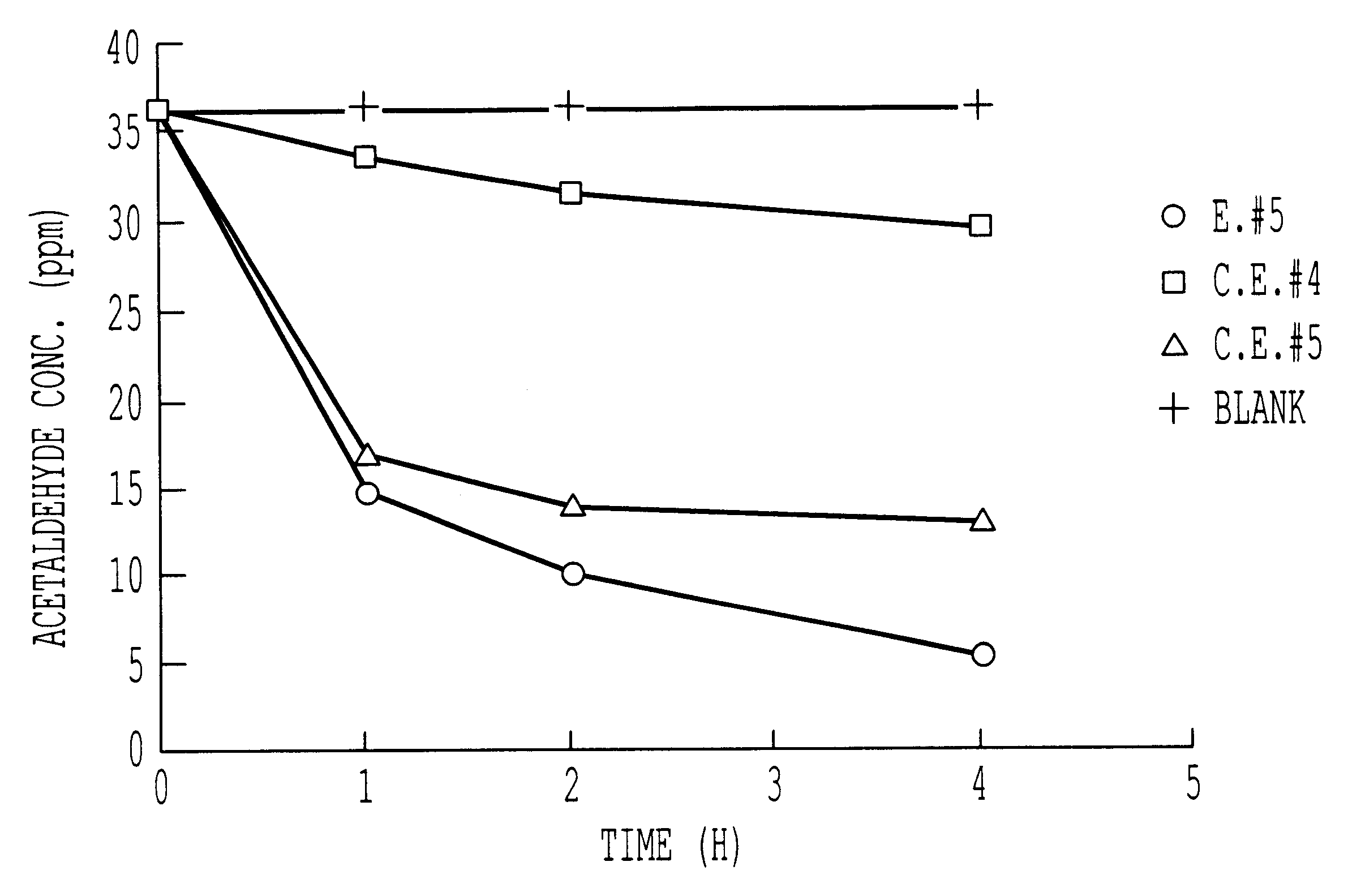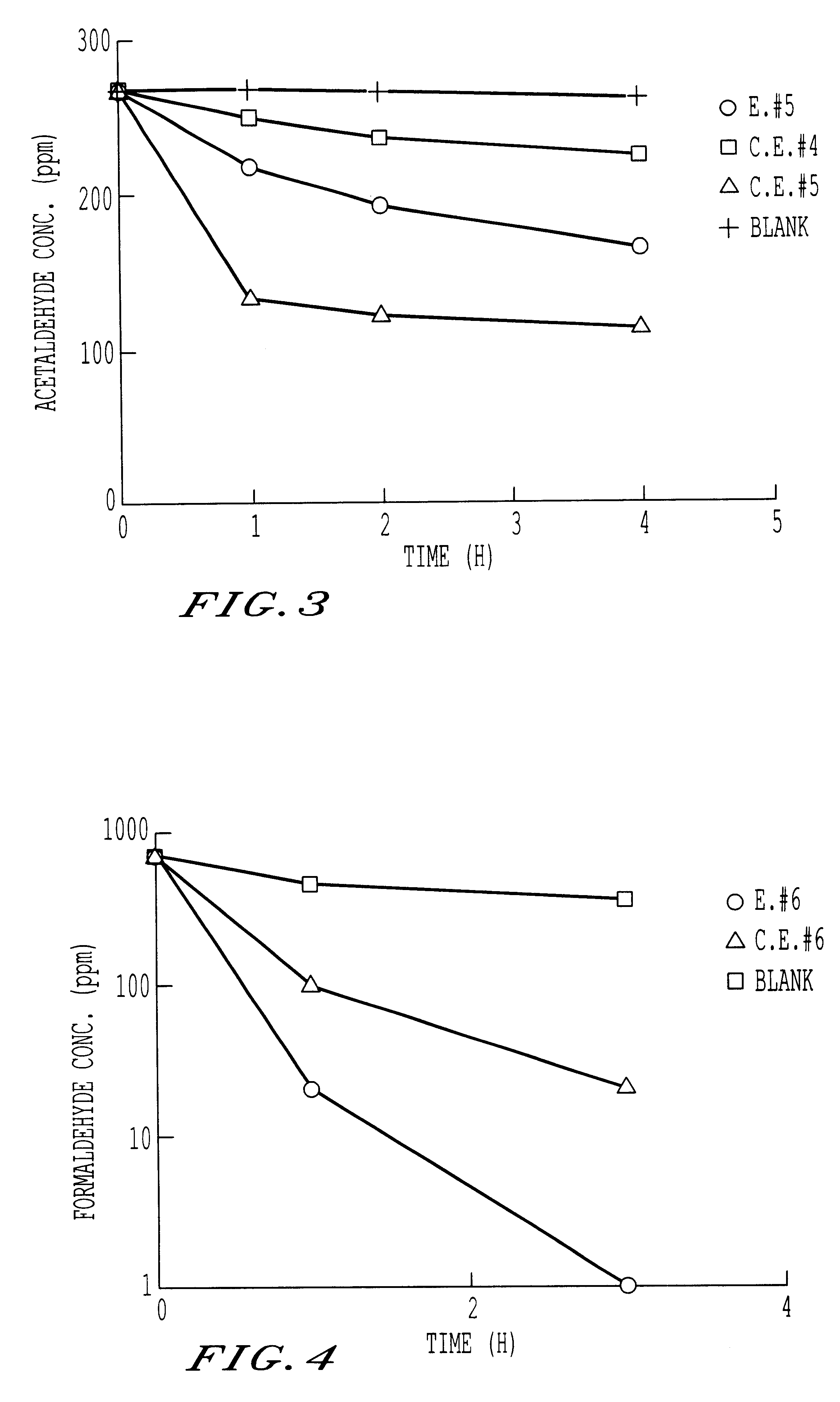Ordinary-temperature purifying catalyst
a purifying catalyst and ordinary temperature technology, applied in the direction of metal/metal-oxide/metal-hydroxide catalysts, combustible gas purification/modification, arsenic compounds, etc., can solve the problems of irritating eyes, nose and throat, and the inability to say that the aforementioned treatments necessarily satisfy the reference values of the japanese health and welfare ministry
- Summary
- Abstract
- Description
- Claims
- Application Information
AI Technical Summary
Problems solved by technology
Method used
Image
Examples
example no.2
EXAMPLE NO. 2
A first mixture aqueous solution was prepared, in which cerium (III) nitrate and zirconium nitrate were solved in a molar ratio of Ce / Zr=5 / 1. While stirring the first aqueous solution, ammonia water was dropped to neutralize and precipitate the first aqueous solution. Subsequently, a second mixture aqueous solution was dropped, mixed and stirred in the first aqueous solution, second aqueous solution which contained hydrogen peroxide water in an amount of 1 / 2 mol with respect to the cerium ions included in the first aqueous solution and 10% by weight of alkylbenzene sulfonic acid with respect to the weight of the resulting oxide.
The resulting slurry was dried, and also the coexisting ammonium nitrate was evaporated, decomposed and removed. Thus, an oxide solid solution powder CeO.sub.2.ZrO.sub.2 was obtained.
2 g of Pt was loaded with respect to 150 g of the oxide solid solution powder CeO.sub.2.ZrO.sub.2. The solid solution powder with Pt loaded was pelletized to have a ...
example no.3
EXAMPLE NO. 3
Except that the Ce / Zr molar ratio was changed to 1 / 1, an ordinary-temperature purifying catalyst of Example No. 3 was prepared by the same operations as those of Example No. 2.
example no.4
EXAMPLE NO. 4
6 L of an aqueous solution ("A" solution), in which aluminum nitrate, zirconium nitrate and cerium nitrate were solved and mixed in a molar ratio of 2.4:0.25:0.25, and a solution ("B" solution), in which ammonium water and ammonium carbonate were mixed and solved in a molar ratio of 8.3:0.08 were prepared, and the "A" solution and the "B" solution were mixed and stirred. After oxide precursors, which were precipitated from the mixture solution, were washed, they were dried, and they were burned at 650.degree. C. for 1 hour. Thus, a composite oxide, in which alumina, ceria and zirconia were dispersed uniformly, was obtained. Hereinafter, the composite oxide was subjected to a reduction treatment under the same conditions as those of Example No. 2, thereby preparing an ordinary-temperature purifying catalyst of Example No. 4.
PUM
| Property | Measurement | Unit |
|---|---|---|
| Length | aaaaa | aaaaa |
| Fraction | aaaaa | aaaaa |
| Fraction | aaaaa | aaaaa |
Abstract
Description
Claims
Application Information
 Login to View More
Login to View More - R&D
- Intellectual Property
- Life Sciences
- Materials
- Tech Scout
- Unparalleled Data Quality
- Higher Quality Content
- 60% Fewer Hallucinations
Browse by: Latest US Patents, China's latest patents, Technical Efficacy Thesaurus, Application Domain, Technology Topic, Popular Technical Reports.
© 2025 PatSnap. All rights reserved.Legal|Privacy policy|Modern Slavery Act Transparency Statement|Sitemap|About US| Contact US: help@patsnap.com



